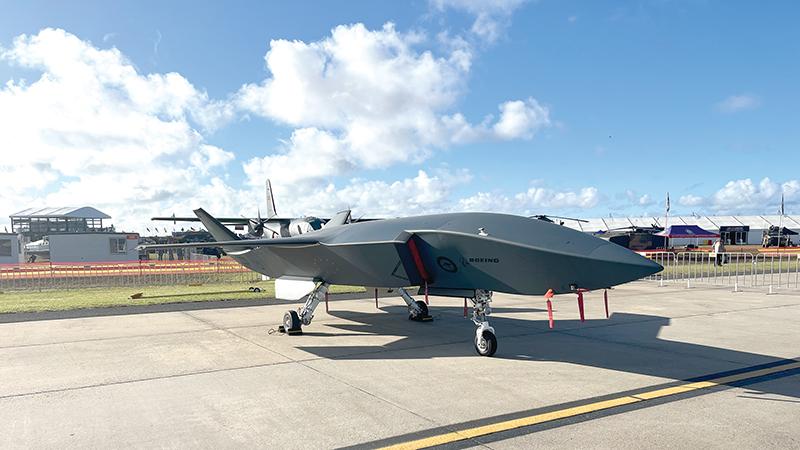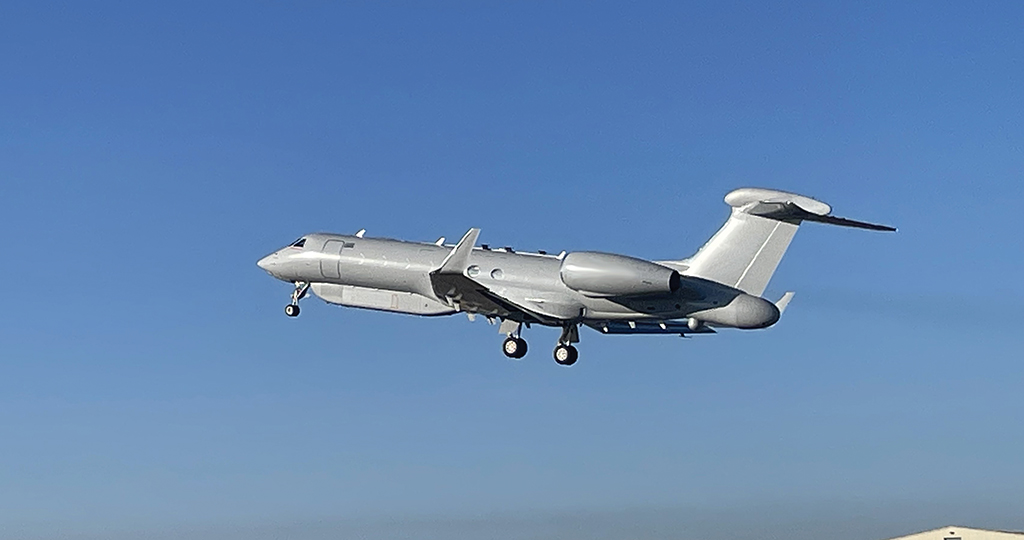This article is published in Aviation Week & Space Technology and is free to read until May 02, 2025. If you want to read more articles from this publication, please click the link to subscribe.

Boeing plans an air-to-air weapons test using the Ghost Bat.
The Royal Australian Air Force is looking to crystallize its plans around collaborative combat aircraft in the coming months as it also aims to introduce several new systems into service.
The Royal Australian Air Force (RAAF) expects to lean on a series of demonstrations with the Boeing MQ-28 Ghost Bat to define its path forward on collaborative combat aircraft (CCA). “We’re going to use this year to make sure we can demonstrate the capability,” Air Marshal Stephen Chappell, RAAF chief of staff, said at the Australian International Airshow in Avalon, Australia. “At the end of this year, I’m looking forward to being able to make recommendations to [the] government” to define investment plans,” he added. “We will test all of the payloads we plan on potentially using.” The service is not planning a weapons launch.
- Australia expects to receive its first MC-55A this year
- The country’s Army awaits its first four AH-64E Apaches
Boeing, which has ambitions to sell to the U.S. and elsewhere the MQ-25 that it designed in and for Australia, has sketched its own plans to fire an air-to-air missile late this year or in early 2026, Steve Parker, interim president and CEO of Boeing Defense, Space and Security, said at the event.
The Ghost Bat had flown 102 missions as of late March. The system “is really maturing,” Parker told reporters at the event.
Boeing has a couple of Block 2 versions of the Ghost Bat in production and expects to have 11 MQ-28s of the Block 1 and 2 standard flying by year-end. The company aims to demonstrate the MQ-28 this year, teamed with the Australian Boeing E-7 airborne early warning system and Lockheed Martin F-35 fighter. One of the aircraft is also in the U.S. for testing.
Block 2 uses lessons from flight trials to make the system more robust, said Amy List, managing director of Boeing Defense Australia. “It’s upgrading a bunch of the equipment on board to make sure that it’s ready for the mission.” One example is making the navigation system more resistant to jamming, she said. Other changes make the system easier to produce and maintain, she added.
The RAAF recommendation to its government is intended to lead to a procurement program, Air 6015, drawing on some of the A$4.3-5.3 billion ($2.7-3.3 billion) earmarked in Australia’s integrated investment program for autonomous aircraft, Air Commodore Angus Porter, the service’s director general for air combat capability, said at Avalon.
Rivals have their eyes on the Australian market, as well. Anduril President Christian Brose said that, based on conversations with Australian military officials, he expects the country to have multiple providers of this type of system in part to address different missions. Anduril displayed a mockup at the event of the Fury CCA it is building for the U.S. Air Force. General Atomics Aeronautical Systems, which also has a U.S. Air Force CCA demonstration contract, similarly used the event to brief users at Avalon on its plans. But Boeing may have an edge. The service’s head of air force capability, Air Vice-Marshal Nicholas Hogan, called the MQ-28 “a very strong contender” and “world-leading.”

The coming months are poised to be critical to enhancing the RAAF’s capability set beyond CCAs. The service, which just fielded the Lockheed Martin Long-Range Anti-Ship Missile on the Boeing F/A-18E/F, also plans to introduce it over the next year on its Boeing P-8A maritime patrol aircraft.
The RAAF is set to receive other capabilities ordered years ago, too, including the first Northrop Grumman Next-Generation Jammer midband system for use on the Boeing EA-18G Growler standoff jammer. It is due in the coming months, a service official said. Australia is a partner with the U.S. Navy on the program, which just reached initial operational capability for the Pentagon.
The first of four MC-55A Peregrine multi-intelligence aircraft also is due for handover by year-end, the RAAF said, after the L3Harris program schedule suffered delays. Those were linked to the modifications that had to be made to the Gulfstream G550 aircraft to accommodate the intelligence collection systems.
Jason Lambert, L3Harris president for intelligence, surveillance and reconnaissance, said on the eve of the gathering that two milestones achieved last year showed the program’s progress. Gulfstream completed FAA-required testing to validate the flightworthiness of the design changes and, toward year-end, received the specific type certificate for the MC-55A configuration. The company also began functional flight tests in late 2024, Lambert added.
The Australian Army is looking for fleet upgrades, too. It expects the first four of 29 Boeing AH-64E Apaches to be delivered by year-end to replace its Airbus Tiger helicopters. The first six are parked to ease the transition to the new attack helicopter, Brig. Steven Cleggett, director general of army aviation systems, said at the show. The Apaches are due to reach initial operational capability in Australia in 2028, at which point all should be handed over.





